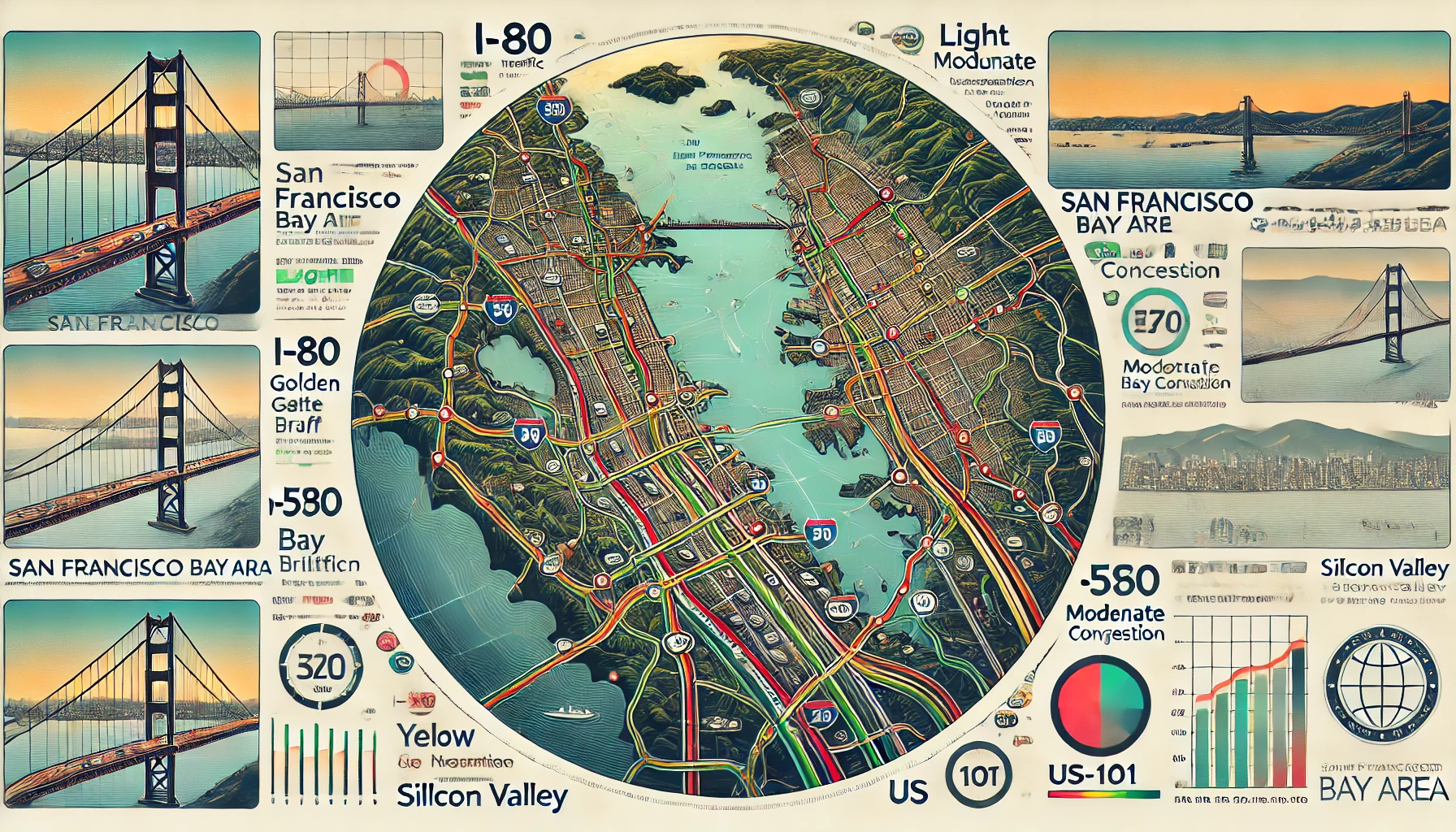Traffic in the Bay Area is infamous for its complexity, often creating a headache for commuters. However, with the power of modern technology and real-time updates, the Bay Area traffic map has emerged as an essential tool to mitigate travel stress. Understanding its features and leveraging its insights can save time, reduce frustration, and improve overall commuting experiences.
Why the Bay Area Traffic Map is Essential
The Bay Area, encompassing major hubs like San Francisco, Oakland, and San Jose, is a bustling region known for its high population density and intricate road networks. The traffic congestion here can seem overwhelming without a clear view of the traffic situation. The Bay Area traffic map offers an in-depth analysis of current traffic flow, incidents, construction zones, and alternate routes, helping drivers make informed decisions.
Key Features:
- Real-Time Updates: Provides minute-by-minute traffic conditions.
- Color-Coded Indicators: Displays the severity of traffic with easy-to-read color gradients.
- Incident Alerts: Flags accidents, construction delays, and other disruptions.
- Route Optimization: Suggests the fastest or most efficient routes.
Understanding the Traffic Patterns
The Bay Area’s traffic patterns vary based on time, day, and location. Rush hours typically see massive congestion, especially on major highways like Interstate 80, US-101, and I-580. Using a traffic map during these hours is critical to avoid bottlenecks.
Rush Hours in the Bay Area:
- Morning: 6:30 AM – 9:30 AM
- Evening: 4:00 PM – 7:00 PM
Weekend traffic, while less predictable, often intensifies near popular destinations such as Golden Gate Bridge, Silicon Valley tech parks, or shopping areas like Union Square.
Real-Time Tools for Commuters
Real-time traffic tools like Google Maps, Waze, and specialized Bay Area traffic map apps offer unparalleled convenience. These tools integrate live data from sensors, cameras, and commuter feedback, allowing users to avoid delays.
For instance, the 511.org Traffic Map, a dedicated Bay Area traffic resource, provides comprehensive coverage of the region. It offers features like live camera feeds, roadwork schedules, and transit alternatives, ensuring seamless navigation.
Pro Tip: Set up traffic alerts and plan trips during off-peak hours to save time and fuel.
Navigating Major Bay Area Bottlenecks
Certain areas in the Bay Area are notorious for heavy congestion. Identifying these spots and planning ahead can make all the difference.
Top Bottleneck Areas:
- Bay Bridge (I-80): A critical connection between San Francisco and the East Bay.
- Dumbarton Bridge (SR-84): Heavy traffic during Silicon Valley commute hours.
- I-680 Corridor: Frequent delays near Pleasanton and Walnut Creek.
- US-101 through San Jose: Intense traffic during morning and evening rush.
Using the Bay Area traffic map, commuters can reroute through lesser-known alternatives like SR-237 or SR-92 to avoid delays.
Public Transit and Traffic Maps
For those opting for public transit, traffic maps remain relevant. Bay Area Rapid Transit (BART), Caltrain, and other systems often integrate with real-time traffic tools to show schedules and potential delays. This integration helps commuters decide whether to drive or take public transportation based on traffic trends.
Benefits of Using Public Transit:
- Reduces carbon footprint.
- Avoids parking hassles.
- Offers consistent travel times during peak hours.
Future of Bay Area Traffic Management
The Bay Area is investing heavily in intelligent traffic systems, including adaptive traffic signals, smart highways, and autonomous vehicle integration. These technologies, combined with advancements in traffic mapping, promise to transform how residents navigate the region.
Smart Solutions on the Horizon:
- Automated alerts for dynamic traffic conditions.
- Integration with electric vehicle charging station locators.
- AI-powered route predictions.
Bay Area Traffic Map: A Traveler’s Lifesaver
Whether you’re a daily commuter or a visitor exploring the region, the Bay Area traffic map is a game-changer. It reduces travel uncertainty and ensures a smoother journey, allowing you to focus on the destination rather than the roadblocks.
By leveraging real-time updates, planning ahead, and exploring alternative routes, you can make your Bay Area travel experience significantly less stressful. With tools like 511.org and Waze at your fingertips, navigating this vibrant yet traffic-heavy region has never been easier.
FAQs
How accurate are Bay Area traffic maps?
Bay Area traffic maps use real-time data from cameras, sensors, and crowd-sourced reports, ensuring high accuracy.
What’s the best app for Bay Area traffic?
Apps like Google Maps, Waze, and 511.org offer excellent Bay Area traffic coverage.
How can I avoid Bay Area traffic jams?
Plan trips during off-peak hours, use real-time traffic maps, and explore alternative routes.
Do traffic maps integrate with public transit?
Yes, many traffic apps provide transit schedules and delays alongside traffic updates.
What’s the worst time to drive in the Bay Area?
Morning (6:30 AM – 9:30 AM) and evening (4:00 PM – 7:00 PM) are peak traffic hours.
Are there any free tools for Bay Area traffic updates?
Yes, tools like 511.org and Google Maps offer free real-time traffic updates.
